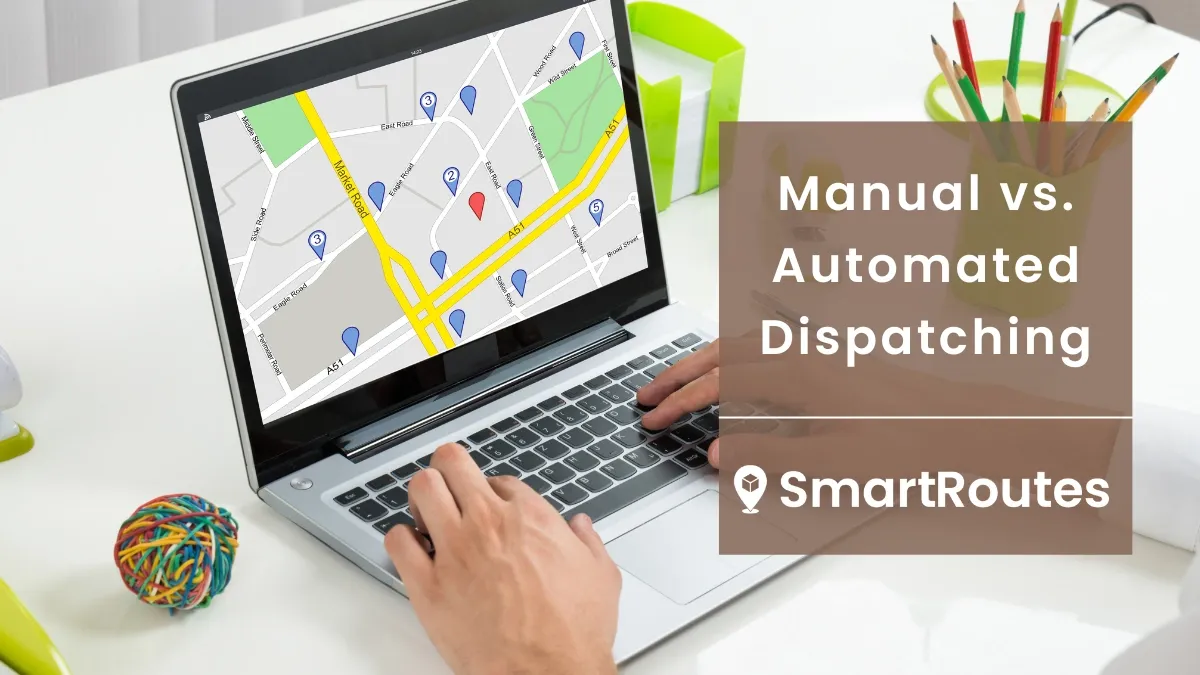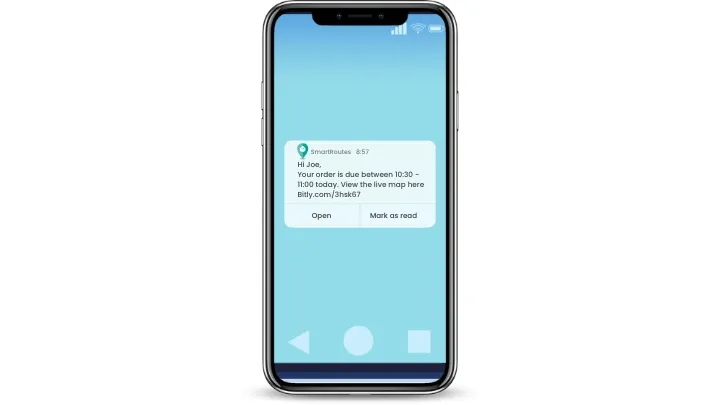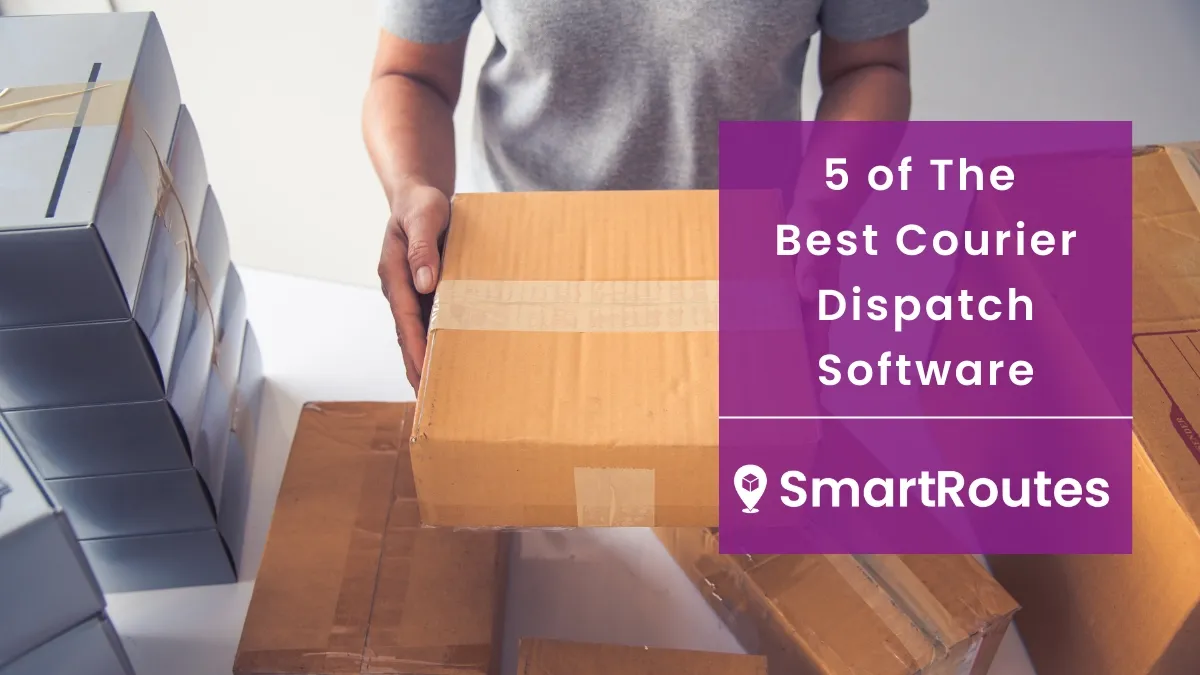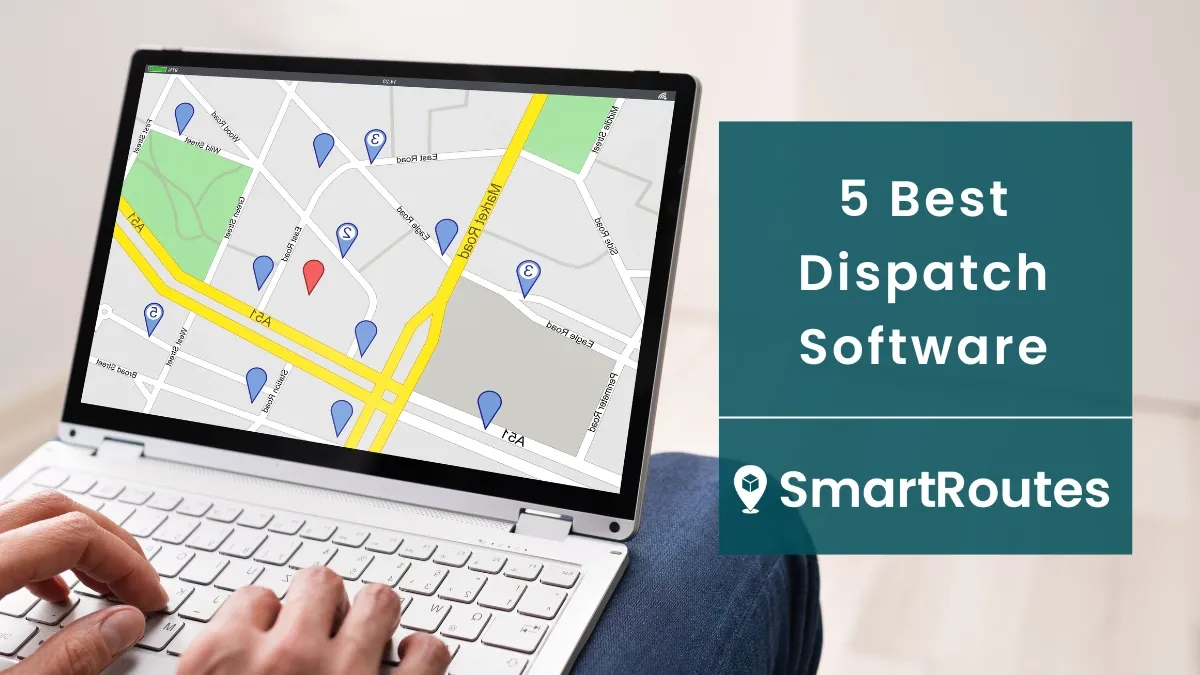Manual vs. Automated Dispatching: Which is better for the Last Mile?
In this blog, we'll delve into the realm of dispatching, comparing Manual vs. Automated methods, and determining which is more effective for the last mile of delivery.

As customer expectations continue to evolve, the pressure to provide more efficient and cost-effective delivery services is higher than ever. One crucial aspect affecting the delivery experience is the speed at which customers receive their purchases.
In this blog, we'll delve into the realm of dispatching, comparing Manual vs. Automated methods, and determining which is more effective for the last mile of delivery.
The Difference between Manual vs. Automated Dispatching
Why Transition to Automated Dispatching?
Features to look for in Automated Dispatching Software
The Difference between Manual vs. Automated Dispatching
Dispatching, the coordination of tasks for delivery personnel, stands at a crossroads between traditional manual methods and cutting-edge automated solutions. The key distinction lies in the human factor, with manual dispatching relying on human planning and automated dispatching leveraging sophisticated software. Let’s take a closer look at the difference between the two:
Manual Dispatching
In the realm of delivery operations, manual dispatching stands as the traditional, time-tested approach. This method revolves around using pen, paper, or spreadsheets and physically handing out printed assignments to drivers. The familiarity of manual dispatching to staff makes it a go-to option, demanding minimal training and ensuring quick adoption by employees.
The ease of implementation is a notable advantage, particularly for small businesses with budget constraints. A minimal upfront investment in software or technology makes manual dispatching an accessible choice for those operating on a shoestring. However, the simplicity of manual dispatching comes at a cost. Manual route planning involves the archaic method of using paper maps or, at best, Google Maps, with drivers manually deciphering the best routes for their deliveries within a given timeframe. This manual process, while rooted in tradition, is prone to errors in both route planning and task assignment, often resulting in frustrating delays.
As the volume of deliveries or service requests increases, manual dispatching faces growing challenges. The limited ability to adapt to real-time changes becomes a significant drawback, impacting overall operational efficiency. What once was a straightforward system becomes increasingly complex and challenging to manage. The risk of human errors looms large, especially as the workload expands. Logistical challenges become more pronounced, introducing hurdles that can hinder the smooth flow of deliveries.
Automated Dispatching
Unlike its manual counterpart, automated dispatching relies on sophisticated software to streamline and optimize various parts of the delivery process. One of the standout features of automated dispatching is route planning optimization. By leveraging advanced algorithms, this system ensures the most efficient paths for deliveries, minimizing travel time and maximizing operational efficiency. The dynamic assignment of tasks based on real-time data further contributes to efficiency gains by reducing idle time and ensuring resources are utilized to their fullest potential.
Crucially, automated dispatching is a powerful ally in error reduction. By automating the assignment of tasks, the likelihood of mistakes in dispatching is significantly diminished. This precision translates into improved delivery times, elevating customer satisfaction levels as businesses consistently meet or exceed expectations. Real-time tracking and analytics constitute another key advantage of automated dispatching. The system provides a live, comprehensive view of delivery operations, offering insights that go beyond mere location tracking. These real-time analytics empower businesses with the data needed for better decision-making, enabling them to proactively address challenges and optimize their processes.
SmartRoutes Route Planning Software
Streamline your entire delivery process, all from one platform

Despite its undeniable benefits, the adoption of automated dispatching comes with its own set of challenges. The higher upfront investment in software, technology, and implementation can pose a barrier for small businesses operating on limited budgets. The need for staff training to adapt to new systems and technologies is another consideration, requiring an investment in human resources to ensure a smooth transition. However, the long-term gains in operational efficiency, error reduction, and customer satisfaction often outweigh these initial challenges, making the transition to automated dispatching a strategic investment for businesses.
Why Transition to Automated Dispatching?
Customers desire timely and efficient deliveries. Automated dispatching systems excel in optimizing routes, dynamically assigning tasks, and leveraging real-time data to reduce idle time. This precision ensures that deliveries make their way to customers promptly, meeting or exceeding their expectations. Also, the ability to consistently provide a superior delivery experience directly influences customer retention. Automated dispatching, by reducing errors in task assignment and optimizing routes, contributes to a seamless and reliable delivery process. Satisfied customers are more likely to return, fostering long-term relationships that are essential for business growth. Businesses, keen on staying ahead of the curve, are turning to automated dispatching systems as these systems not only streamline operations but also position businesses as forward-thinking and responsive to customer demands.
Features to look for in Automated Dispatching Software
Route Optimization:
- Dynamic Route Planning: The software should dynamically plan routes, considering variables such as time windows, delivery distances, and driver breaks. This dynamic approach ensures that routes are continuously optimized based on real-time factors.
- Adaptive Capacity: An effective system should be adaptable to varying capacity constraints and load balancing requirements, ensuring that each delivery vehicle is efficiently utilized.

Capacity Management:
- Fleet Synchronization: Automated dispatching software must synchronize with the capacity of your fleet. This involves a thorough understanding of the types of vehicles in your fleet, their capacities, and any restrictions they might have (eg. size or weight).
- Efficient Load Allocation: The system should allocate deliveries in a way that maximizes vehicle capacity, ensuring that each vehicle is optimally loaded before leaving the depot. This results in decreased operational costs per delivery and improved profit margins.
Live Tracking and Visibility:
- Real-Time Monitoring: The software should provide real-time tracking capabilities, allowing businesses to monitor the location and status of each delivery vehicle at any given moment.
- Interactive Dashboards: A dashboard that displays live data on a map can significantly enhance visibility. This feature enables dispatchers to make informed decisions promptly, addressing any potential issues or delays.
Delivery Notifications:
- Automated Customer Updates: The system should automate notifications to customers at key stages—pre, during, and post-delivery. This reduces the need for manual updates and enhances customer communication.
- Customizable Notifications: Businesses should have the flexibility to customize notifications to include relevant information such as a digital copy of the Proof of Delivery (POD), delivery time, and specific details about the delivery location.

Reporting:
- Comprehensive Analytics: The software should offer a range of analytics and reporting tools. This includes insights into planned stops versus actual stops, driver hours, and other key performance indicators.
How SmartRoutes Automates Dispatching
SmartRoutes revolutionizes dispatching through its seamless and automated processes, making it an indispensable tool for businesses seeking efficiency and precision in their logistics operations. We offer a 7 day free trial ensuring that users experience the transformative benefits firsthand.
From intelligent route optimization to proactive customer notifications, live tracking and accurate ETAs, to the crucial proof of delivery functionality, our platform goes above and beyond to streamline every facet of dispatching. In embracing SmartRoutes, businesses not only save time and resources but also elevate the overall quality and reliability of their delivery operations.
Getting started with SmartRoutes is effortlessly simple, facilitated by an extensive library of guides designed to assist with the setup process.
Frequently asked questions
1. How does automated route dispatching improve fuel efficiency in delivery operations?
Automated route dispatching optimizes delivery routes, reducing unnecessary mileage and idle time. This efficiency directly contributes to fuel savings and minimizes the environmental impact of delivery fleets.
2. What role does real-time tracking play in enhancing last-mile delivery services?
Real-time tracking provides live visibility into delivery operations, enabling businesses to monitor and adjust routes dynamically. This level of visibility enhances delivery accuracy, reduces delays, and improves overall customer satisfaction.
3. Can automated dispatching software integrate with existing order management systems?
Yes, many advanced automated dispatching solutions offer integration capabilities with existing order management systems. This seamless integration streamlines the flow of information, automating the dispatching process and reducing the likelihood of errors.
4. What impact does route optimization have on delivery time and customer satisfaction?
Route optimization significantly reduces delivery times by identifying the most efficient paths for deliveries. This, in turn, enhances customer satisfaction as businesses consistently meet or exceed delivery expectations, contributing to positive customer experiences.
If you enjoyed this blog, you might also be interested in:







